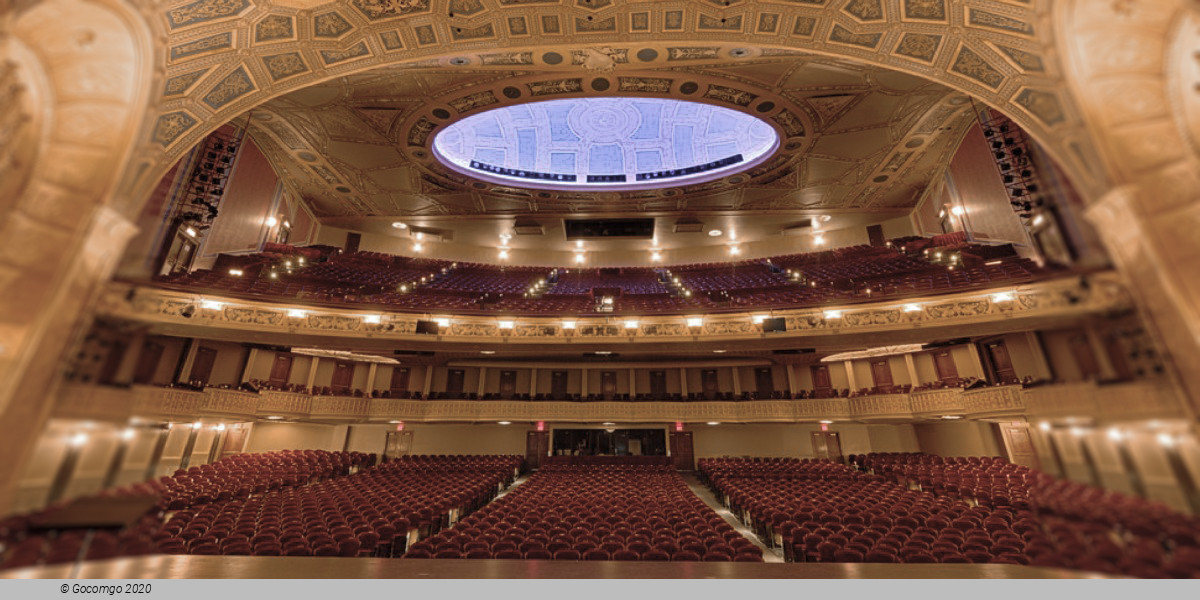Detroit Opera House (Detroit, USA)
Detroit Opera House

The Detroit Opera House is an ornate opera house located at 1526 Broadway Street in Downtown Detroit, Michigan, within the Grand Circus Park Historic District. The 2,700-seat venue is the home of productions of the Michigan Opera Theatre and a variety of other events. The theatre was originally designed by C. Howard Crane, who created other prominent theatres in Detroit including The Fillmore Detroit, the Fox Theater and the Detroit Symphony's Orchestra Hall. It opened on January 22, 1922.
Historically, Michigan Opera Theatre’s home is Detroit’s fifth opera house. Previous venues in Detroit included a “Detroit Opera House” from 1869-1963 at Kennedy Square, “Whitney Grand Opera House” (renamed Garrick Theater) located on Griswold and Michigan Avenues, and the “New Detroit Opera House” from 1886-1928 located at Randolph and Monroe Streets.
Located on the corners of Broadway Street and Madison Street at Grand Circus Park, the theater now known as the Detroit Opera House was originally opened January 12, 1922, as the Capitol Theater. At the time of its gala premiere, the 4,250-seat theater claimed to be the fifth largest in the world. The theater was the first in a series of palatial vaudeville and moving picture houses built in the Grand Circus Park area in the 1920s. Designed by renowned Detroit architect C. Howard Crane, whose genius for theater design took him to cities around the nation, the building was constructed with superb acoustics and in the style of the grand European opera houses. Crane also designed such Detroit landmarks as the Fox Theater, State Theater, and the acoustically perfect Orchestra Hall.
The Capitol Theater was resplendently decorated in the Italian Renaissance style with lavish crystal chandeliers, frescoes, brass fixtures, marble stairways and drinking fountains. Rich rose-red Italian damask was used for the main-stage curtain and draperies throughout the house. Most of these features are present today in the Detroit Opera House.
In the fall of 1929, the Capitol Theater became the Paramount Theater and, in 1934, was renamed the Broadway Capitol Theater. Within the first few decades, the grand theater hosted the likes of Will Rogers, Louis Armstrong, Betty Hutton, Guy Lombardo and Duke Ellington; and later, Gale Storm, Sal Mineo and many of the rock and roll stars of the 1950s.
After several years of near decay the theater underwent a minor restoration in 1960. The renamed and reconfigured 3,367-seat Grand Circus Theater became a movie house once again. The Grand Circus Theater closed its doors in 1978 and reopened under the same name in 1981. From 1981 to 1985 the theater ran intermittently, presenting a diversity of entertainment from mainstream artists Ray Charles and Roy Orbison to an alternative rock series entitled “Grand Circus Live.” The 1922 palace closed its doors for the last time in November of 1985, after a small fire. The theater would be neglected for three years until the nomadic Michigan Opera Theatre met its destiny.
Fast Facts
- Located in downtown Detroit’s Entertainment District
- Designed by renowned Detroit architect C. Howard Crane
- Originally opened January 12, 1922 as the Capitol Theater
- At the time of its gala premiere, the 4,250-seat theater claimed to be the fifth largest in the world
- Today, the main auditorium seats over 2,700 opera goers


